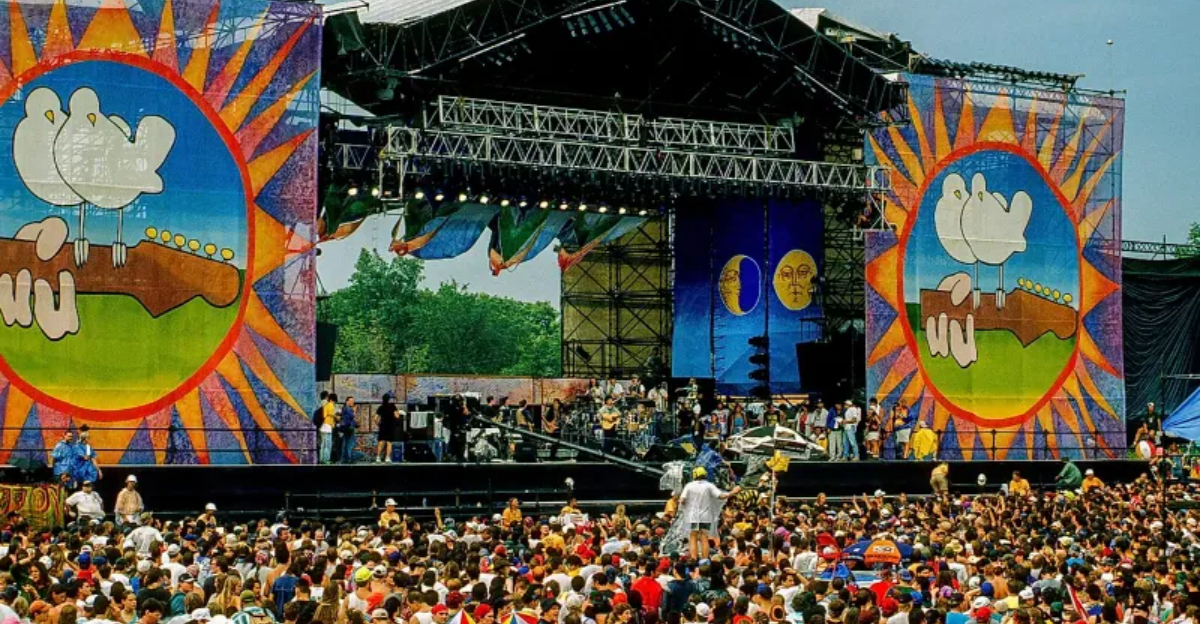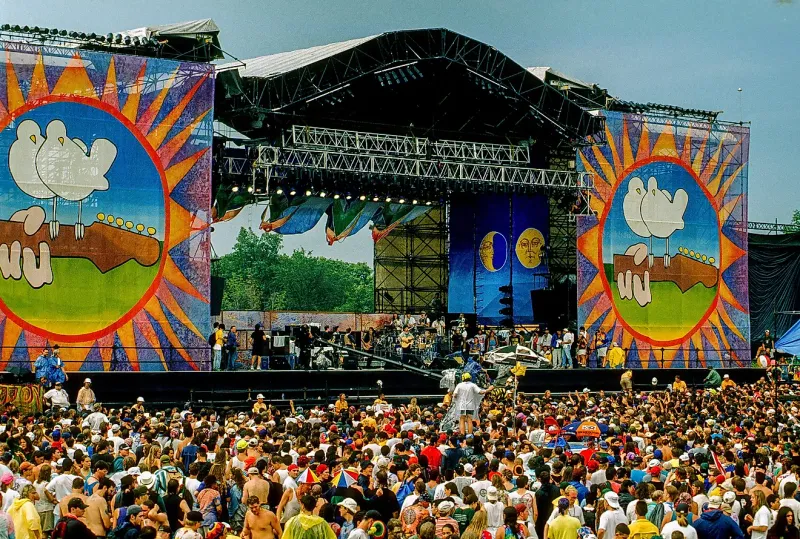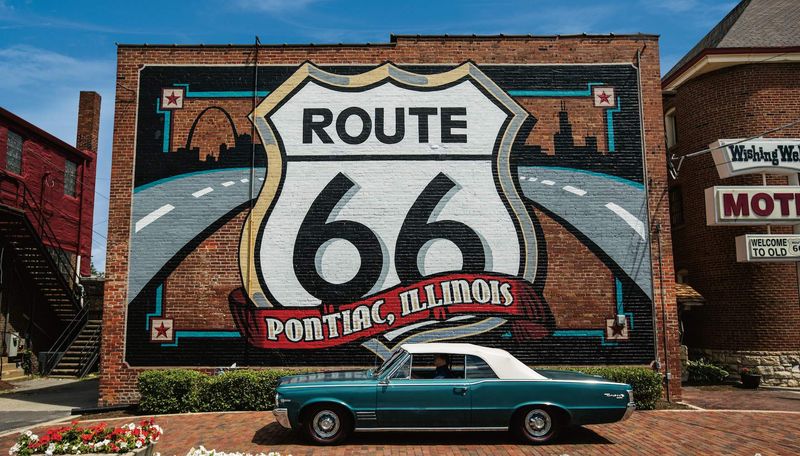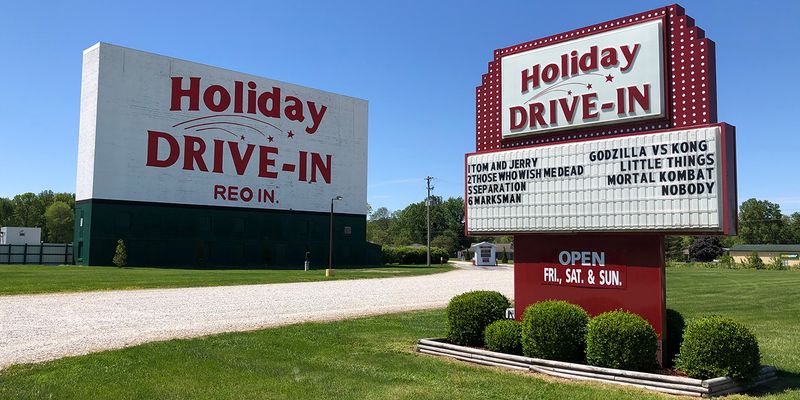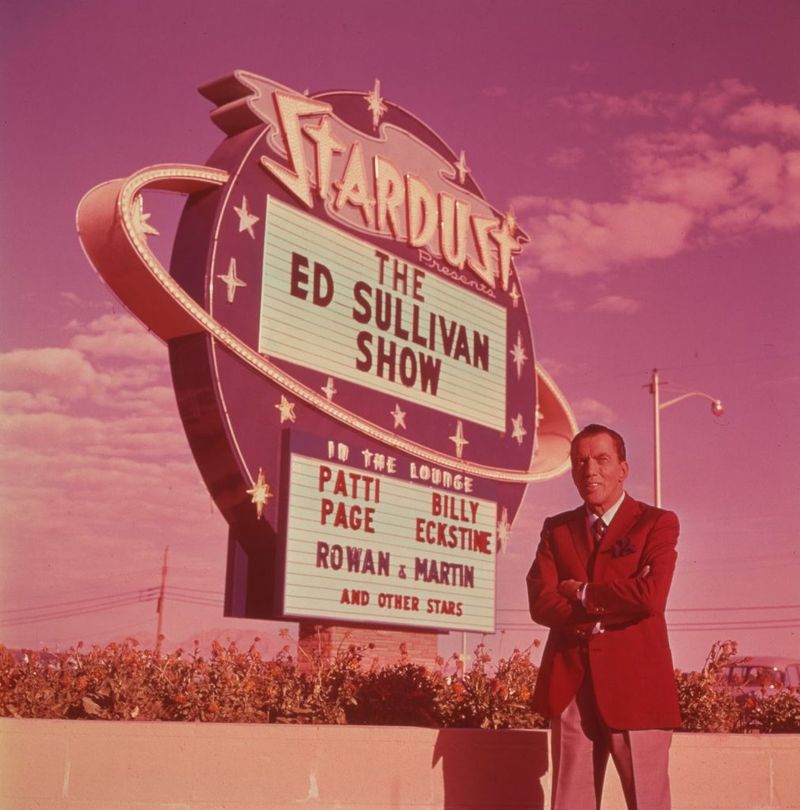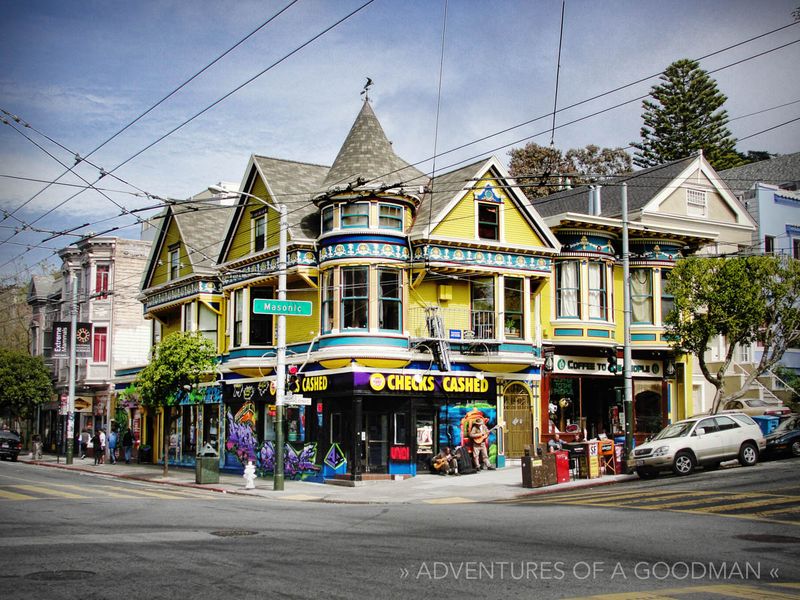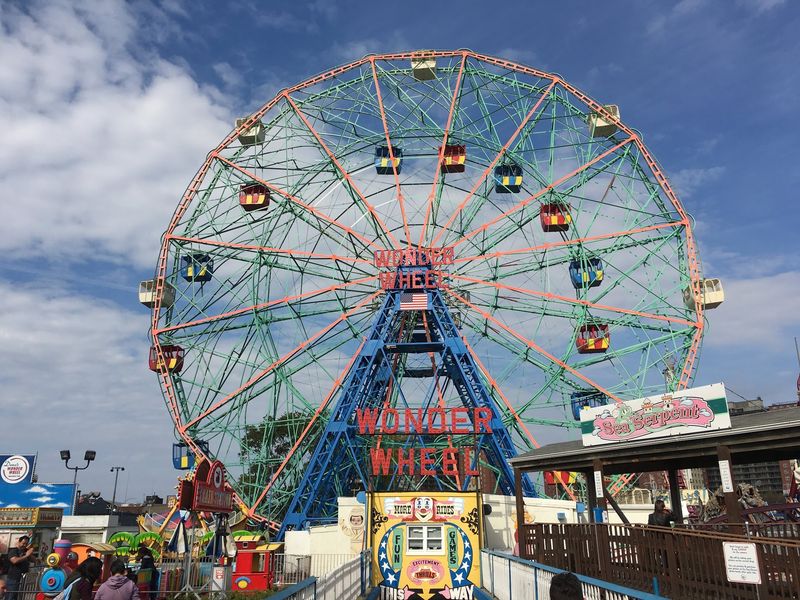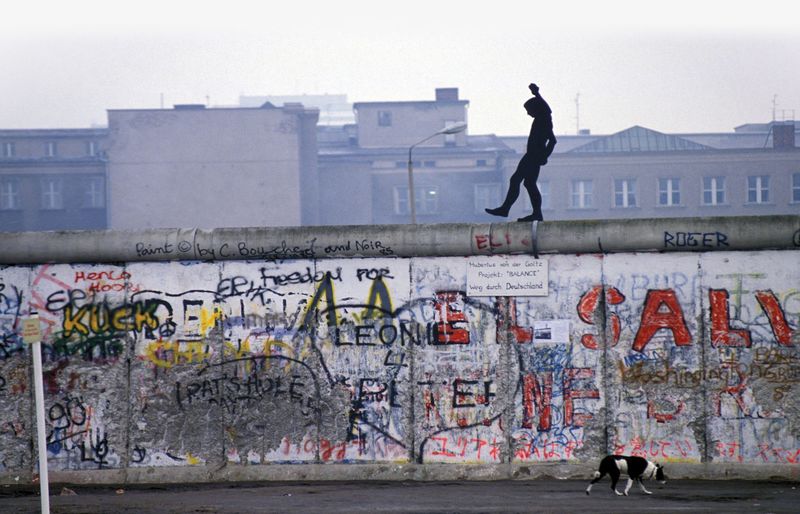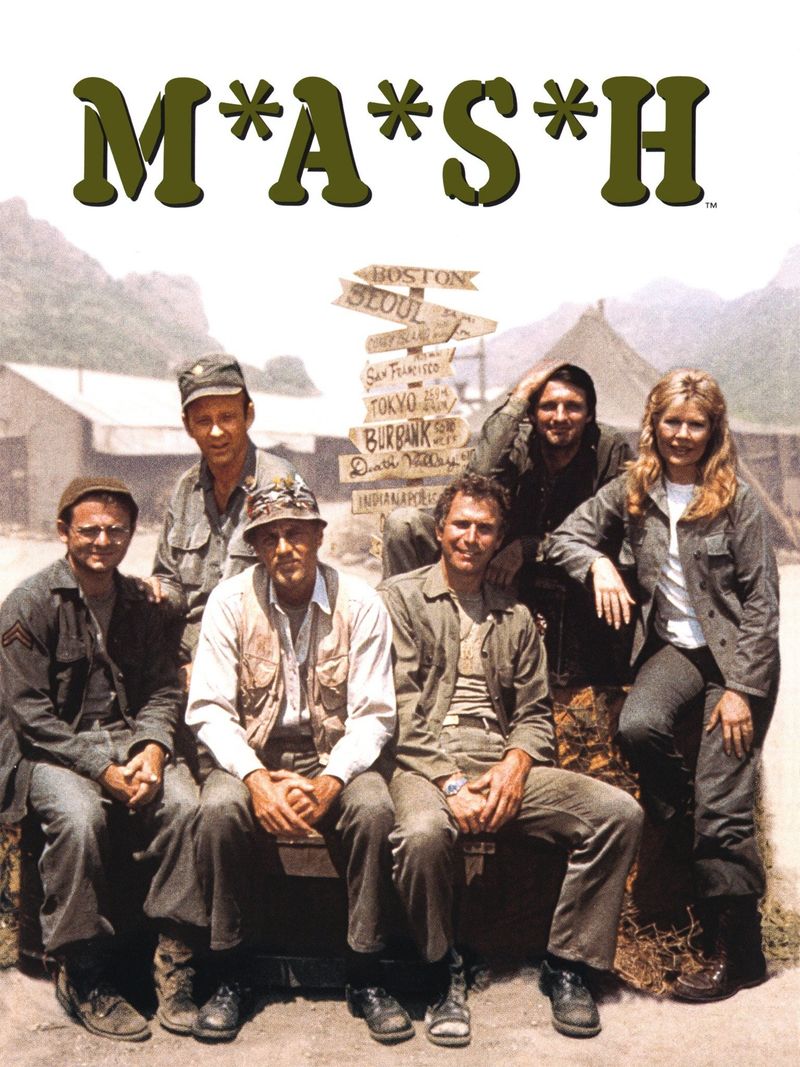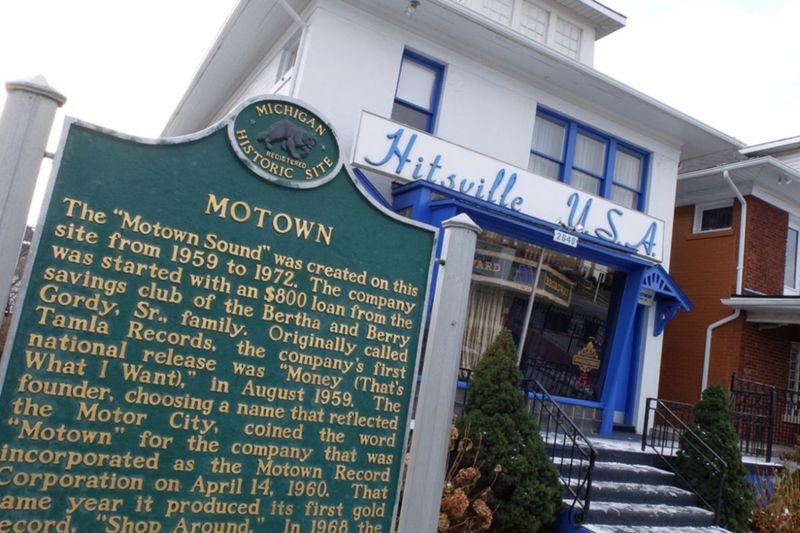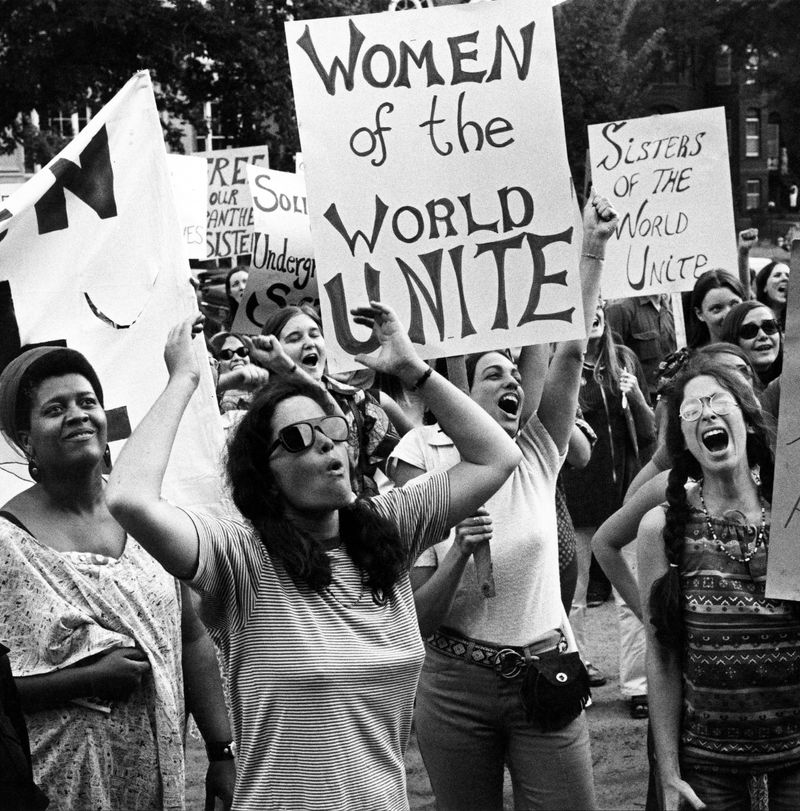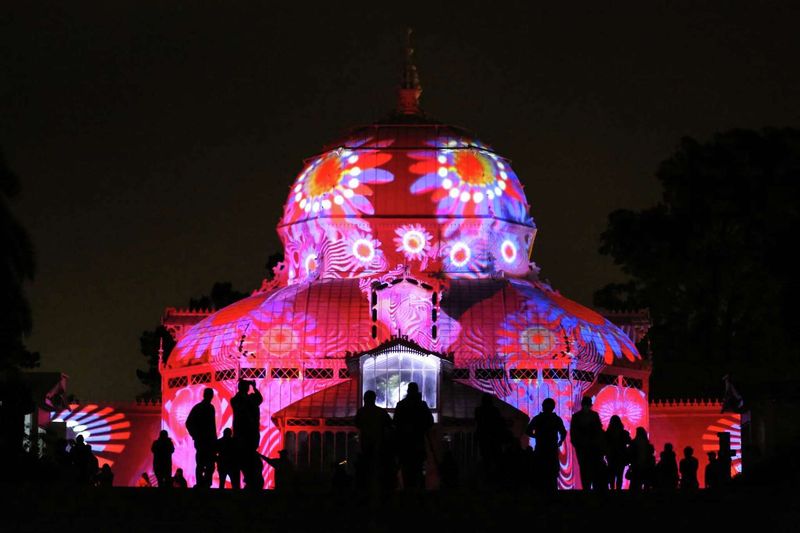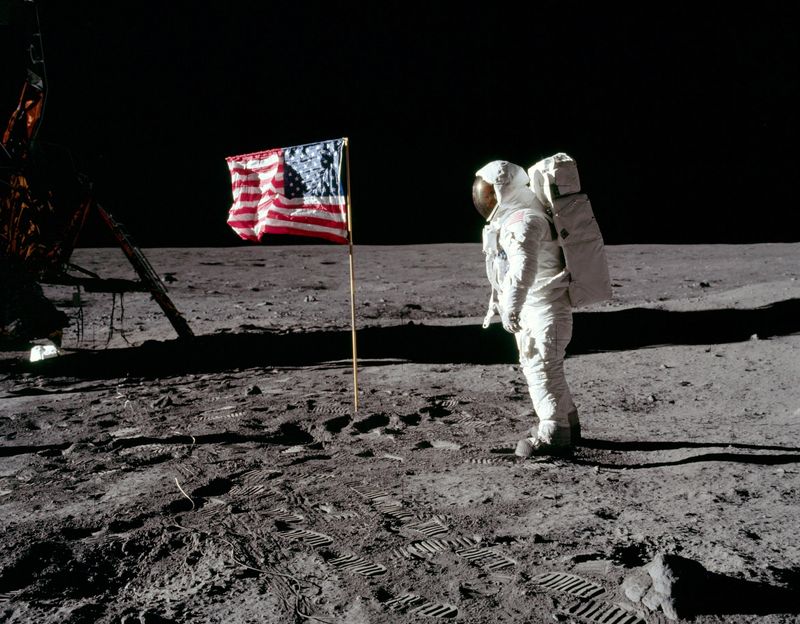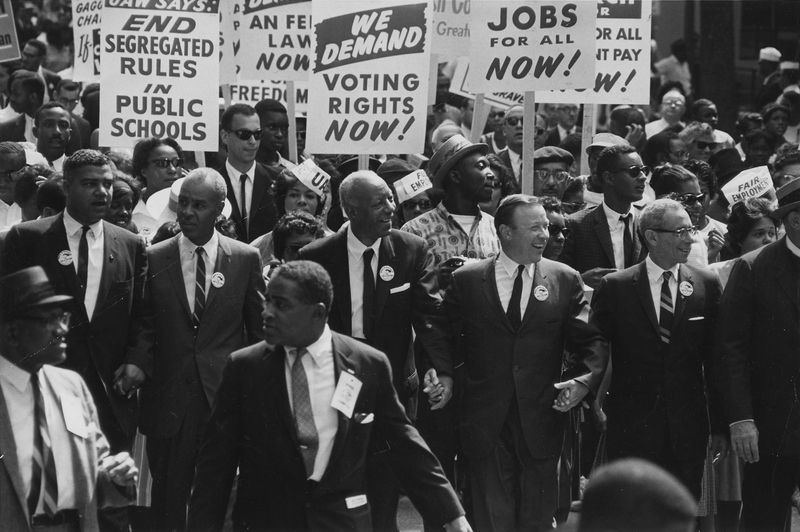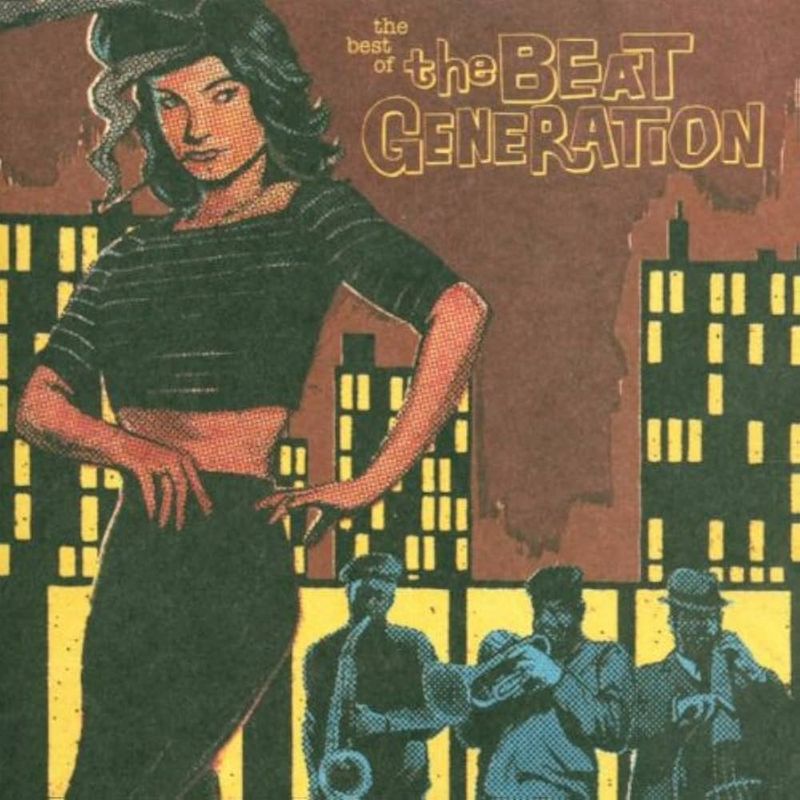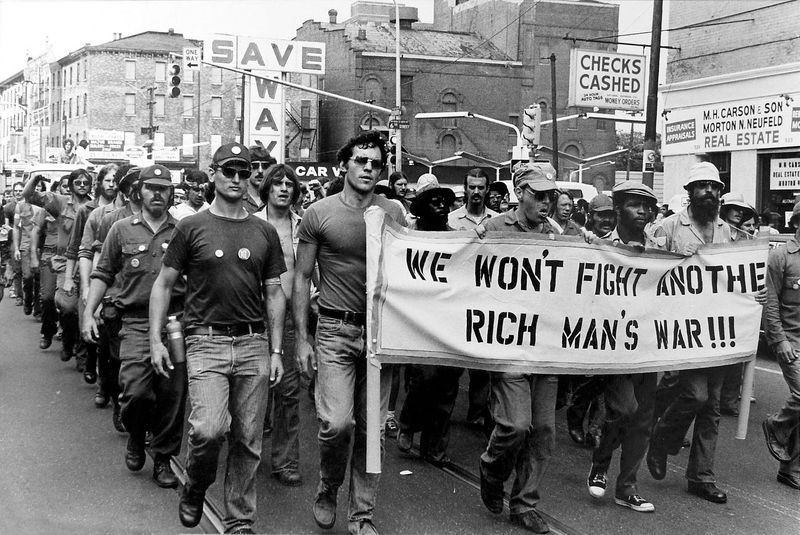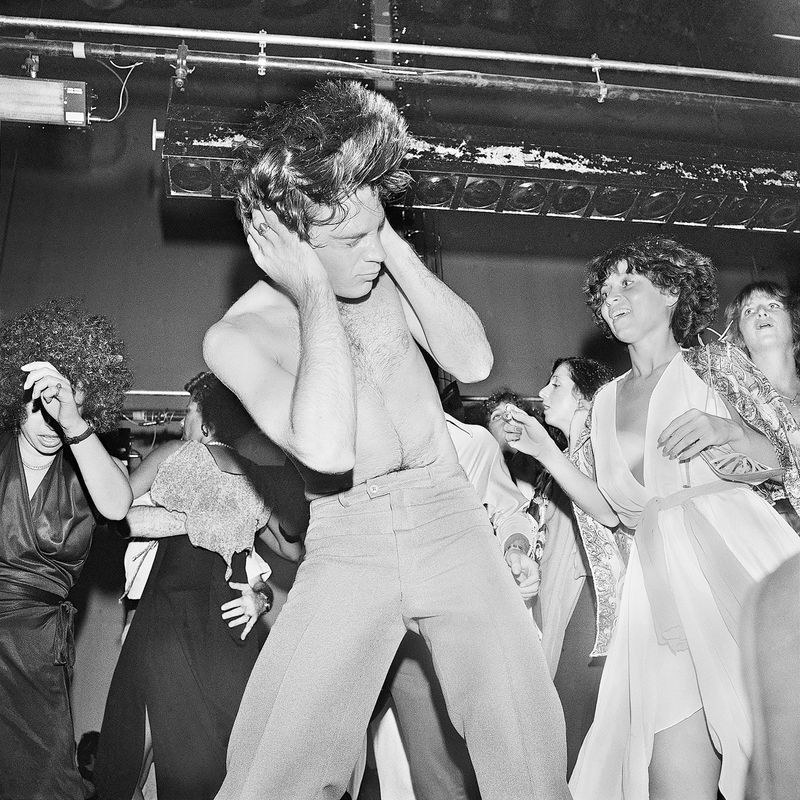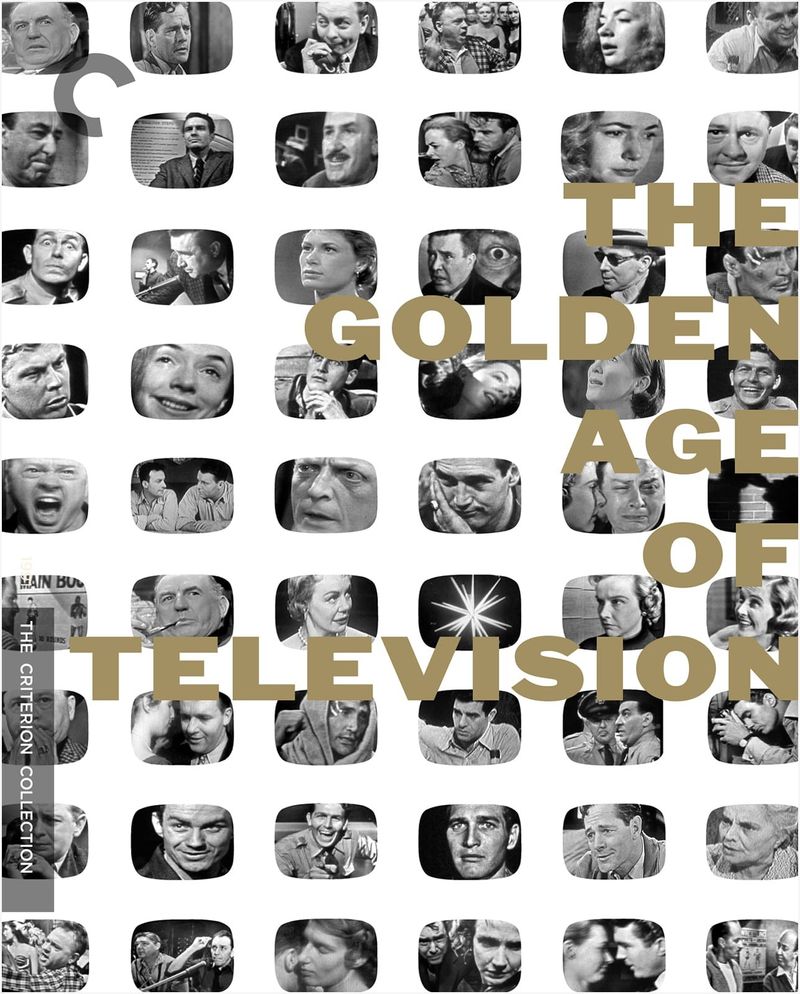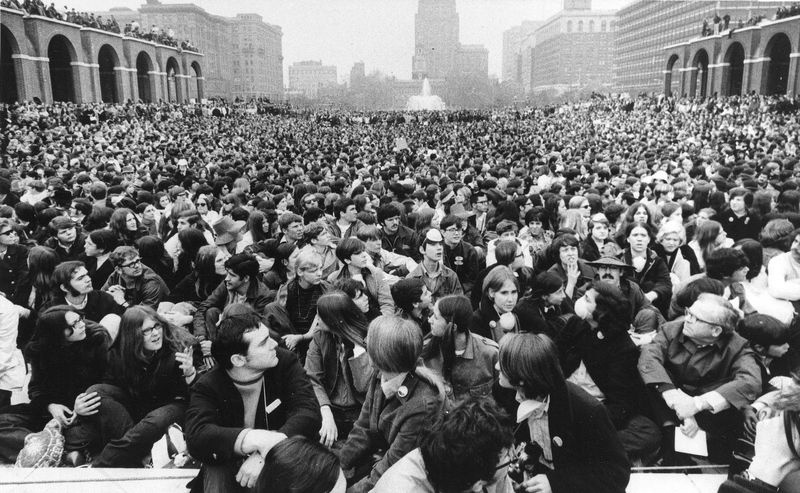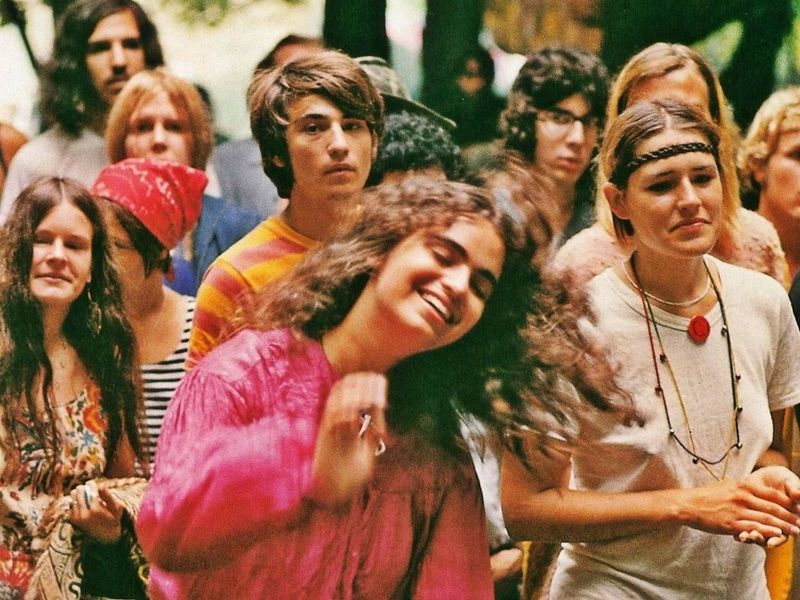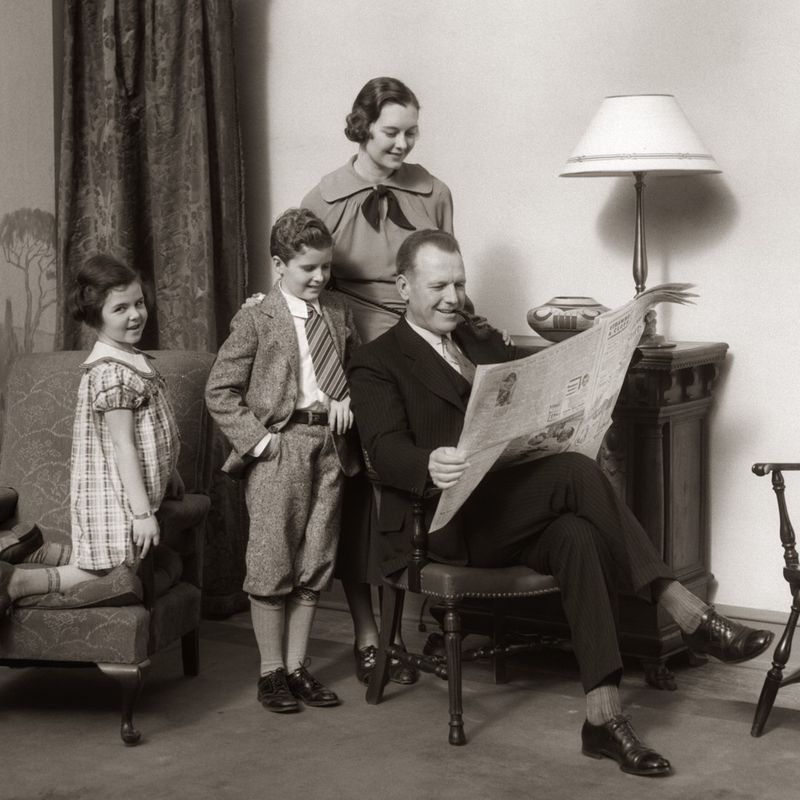The Baby Boomer generation, born between 1946 and 1964, witnessed the emergence of cultural landmarks that shaped their identity and experiences.
From iconic music festivals to groundbreaking television shows, these landmarks defined an era of change and innovation.
However, as time progresses, many of these cultural touchstones are facing the threat of disappearing, due to technological advancements, changing societal values, and the relentless march of time.
In this exploration, we delve into 25 cultural landmarks that not only defined the Baby Boomer generation but are also at risk of fading into obscurity.
1. Woodstock Music Festival
The Woodstock Music Festival, held in 1969, was a defining moment for the Baby Boomer generation. Known for its peace-promoting message and iconic performances, it symbolized a cultural revolution.
The event drew hundreds of thousands to a rural farm in New York, creating an unforgettable atmosphere of unity and music.
Today, Woodstock’s legacy lives on, but the physical farm faces development pressures. As society shifts towards digital experiences, the magic of communal live events diminishes.
Preserving this landmark challenges us to balance modernization with the cultural heritage that Woodstock represents.
2. Route 66
Route 66, the Main Street of America, was a symbol of freedom and adventure for Baby Boomers.
Stretching from Chicago to Santa Monica, this highway captured the essence of American exploration and nostalgia. Its neon-lit motels and quirky roadside attractions became iconic.
However, with the construction of interstate highways, Route 66 has seen a dramatic decline. The once-bustling route now showcases abandoned relics. Preservation efforts are in place, but economic shifts pose challenges.
Rediscovering Route 66 means embracing the charm of travel from a bygone era while adapting to modern transportation needs.
3. Drive-In Theaters
Drive-in theaters were the epitome of entertainment for Baby Boomers, offering a unique cinematic experience.
Families and couples gathered under the stars to watch films from the comfort of their cars. This cultural phenomenon blended leisure with the allure of Hollywood.
However, with the rise of multiplex cinemas and streaming services, drive-ins are disappearing. The nostalgic charm of watching a movie outdoors struggles against modern conveniences.
Efforts to revive drive-ins focus on community events and retro appeal. Balancing nostalgia with contemporary demands poses a challenge for preserving this classic American pastime.
4. Vinyl Records
Vinyl records defined the music experience for Baby Boomers, offering a tactile and immersive listening journey.
Albums became cherished collections, with iconic covers and rich analog sound. Music lovers spent hours flipping through record store bins, seeking hidden gems.
In the digital age, vinyl faced extinction, but a surprising resurgence has occurred. Collectors and audiophiles appreciate its warm sound quality. Yet, mass production and shifting music consumption habits threaten its longevity.
Embracing vinyl means appreciating an art form that allows listeners to slow down and engage with music in a tangible way.
5. The Ed Sullivan Show
The Ed Sullivan Show was a television staple that introduced Baby Boomers to groundbreaking music and entertainment. Known for featuring acts like The Beatles and Elvis Presley, the show was a cultural touchstone for families gathering around their TV sets.
Today, the landscape of entertainment has shifted dramatically. Streaming services and on-demand content challenge traditional broadcasting. The legacy of The Ed Sullivan Show endures, but the format faces obsolescence.
The challenge lies in preserving the spirit of shared cultural moments in an era where individual viewing habits dominate.
6. The Peace Symbol
The Peace Symbol became an emblem of the 1960s counterculture, representing anti-war sentiments and social change. For Baby Boomers, it was a powerful icon seen on posters, clothing, and protests, symbolizing hope for a better world.
Despite its enduring significance, the symbol’s impact has waned as new generations adopt different icons. Yet, it remains a reminder of a pivotal era.
Preserving its legacy involves educating younger generations about its historical roots and importance. The Peace Symbol’s fate is tied to collective memory and the ongoing struggle for peace.
7. Haight-Ashbury
Haight-Ashbury in San Francisco was the epicenter of the hippie movement in the 1960s. Known for its vibrant culture, music, and art, it attracted Baby Boomers seeking alternative lifestyles. The neighborhood symbolized freedom and nonconformity.
Today, Haight-Ashbury’s bohemian spirit is threatened by commercialization and gentrification. The unique cultural identity risks being overshadowed by modern development.
Efforts to preserve its legacy focus on maintaining its artistic charm and historical significance. The challenge lies in balancing economic growth with the preservation of a cultural landmark cherished by a generation.
8. Coney Island Amusement Parks
Coney Island, once a vibrant hub of amusement and entertainment, captured the essence of mid-20th-century leisure.
Its amusement parks were a magnet, drawing families and thrill-seekers alike. Roller coasters, funhouses, and sideshows provided endless excitement and joy.
Over the years, these parks have struggled against urban development and changing tastes. The introduction of modern theme parks further diverted attention, leading to a decline in visitors.
Today, only a shadow of its former self remains, with many rides dismantled, the laughter and cheers fading into history.
Efforts to revitalize Coney Island reflect a nostalgia-driven desire to preserve its enchanting charm. Yet, the balance between modernization and tradition poses challenges, as developers seek to reinvent while preserving its cultural significance.
9. The Berlin Wall
The Berlin Wall was a stark symbol of Cold War division, impacting Baby Boomers globally. Its presence divided families and ideologies, representing the tangible barrier between East and West. The wall’s fall in 1989 marked a significant moment in history.
While the wall itself is gone, its lessons remain relevant. Understanding its historical context and impact on liberation is crucial.
Preserving its memory involves educating new generations about the importance of unity and reconciliation. The Berlin Wall’s legacy serves as a reminder of the resilience of those who lived on both sides.
10. M*A*S*H TV Series
The M*A*S*H TV series was a groundbreaking show that tackled the complexities of war with humor and heart. Baby Boomers tuned in for its witty commentary on the human condition and its poignant moments of introspection.
In today’s fast-paced media landscape, M*A*S*H’s slower narrative style may seem outdated. Yet, its themes of camaraderie and resilience remain timeless.
Preserving its impact involves recognizing the show’s ability to blend comedy with social commentary. M*A*S*H continues to resonate, offering valuable insights into the human experience during times of conflict.
11. Motown Records
Motown Records was synonymous with the sound of a generation, producing hits that defined the Baby Boomer era. Known for its soulful melodies and talented artists, it broke racial barriers and shaped the music industry.
However, the music landscape has changed dramatically. Digital platforms and evolving tastes challenge traditional recording labels. Preserving Motown’s legacy involves celebrating its contributions to diversity and artistry.
The label’s history is a testament to the power of music in transcending social boundaries. It remains an inspiration for future generations of musicians and fans alike.
12. The Feminist Movement
The Feminist Movement of the 1960s and 1970s was a pivotal force for change, advocating for gender equality and women’s rights. Baby Boomers witnessed its evolution, as it reshaped societal norms and opened doors for future generations of women.
Despite progress, the movement’s goals are far from complete. New challenges and perspectives continue to emerge. Preserving its legacy involves recognizing the ongoing struggle for gender equity and celebrating past achievements.
The Feminist Movement’s history is a reminder of the power of collective action and the pursuit of justice.
13. The Summer of Love
The Summer of Love in 1967 was a cultural phenomenon that brought together Baby Boomers in a celebration of peace, love, and music. San Francisco became a hub for counterculture, as thousands flocked to the city in search of new experiences.
Today, the spirit of the Summer of Love is often romanticized but risks fading from memory. Preserving its essence involves understanding the social movements it inspired and the cultural shifts it initiated.
The Summer of Love serves as a reminder of the transformative power of unity and the pursuit of alternative lifestyles.
14. The Apollo 11 Moon Landing
The Apollo 11 moon landing in 1969 was a momentous achievement that captivated Baby Boomers and the world. Neil Armstrong’s iconic words and the images of astronauts walking on the moon remain etched in history.
As space exploration evolves, the moon landing’s significance risks being overshadowed by new endeavors. Preserving its legacy involves inspiring future generations to dream big and explore the unknown.
The Apollo 11 mission is a testament to human ingenuity and perseverance, reminding us of the possibilities that arise when nations collaborate for a common goal.
15. The Civil Rights Movement
The Civil Rights Movement was a defining force in reshaping American society, championing equality and justice for African Americans. Baby Boomers witnessed pivotal moments like the March on Washington and the Civil Rights Act.
Today, the fight for racial equality continues. Preserving the movement’s legacy involves acknowledging past struggles and addressing present challenges. Education and activism play crucial roles in ensuring its history is not forgotten.
The Civil Rights Movement serves as a beacon of hope and a reminder of the enduring pursuit of justice and equality for all.
16. The Beat Generation
The Beat Generation was a literary movement that challenged conventional norms and celebrated spontaneity. Baby Boomers embraced its rebellious spirit and the works of authors like Jack Kerouac and Allen Ginsberg.
The movement’s influence endures, yet its relevance faces challenges in a rapidly changing world. Preserving its legacy involves recognizing its role in shaping artistic expression and counterculture.
The Beat Generation’s history is a testament to the power of words to inspire change and foster creativity. It invites new generations to explore alternative perspectives and embrace authenticity.
17. The Vietnam War Protests
The Vietnam War protests were a powerful expression of dissent, as Baby Boomers rallied against a conflict they saw as unjust. The protests highlighted the generation’s commitment to peace and social justice.
While the war has ended, the spirit of activism remains relevant. Preserving its legacy involves understanding the impact of collective action and the importance of questioning authority.
The Vietnam War protests serve as a reminder of the courage required to stand up for one’s beliefs and the enduring need for vigilance in the pursuit of peace.
18. The Disco Era
The Disco Era was a time of exuberance and celebration, with Baby Boomers embracing the dance culture and vibrant music. Nightclubs became the epicenter of social gatherings and musical innovation.
As music tastes evolved, disco faced criticism and decline. However, its influence persists, with modern artists drawing inspiration from its beats and rhythms.
Preserving its legacy involves appreciating its role in uniting diverse communities on the dance floor. The Disco Era remains a testament to the joy of self-expression and the ability of music to transcend societal barriers.
19. The Cold War
The Cold War was a period of intense geopolitical tension that defined the Baby Boomer generation. Its influence reached every corner of the globe, impacting politics, culture, and technology.
While the Cold War has ended, its lessons remain relevant in today’s complex world. Understanding its history is crucial for navigating contemporary international relations.
Preserving its legacy involves recognizing the importance of diplomacy and cooperation. The Cold War serves as a reminder of the need for vigilance in preventing future conflicts and fostering a more peaceful world.
20. The Golden Age of Television
The Golden Age of Television introduced Baby Boomers to a new era of entertainment, with shows that became household classics. Families gathered to watch programs that shaped pop culture and societal norms.
Today, the television landscape has evolved with streaming and on-demand options. Preserving its legacy involves celebrating the creativity and innovation of early TV pioneers.
The Golden Age of Television serves as a reminder of the power of storytelling and the role of media in shaping collective experiences. It continues to inspire new generations of content creators.
21. The Environmental Movement
The Environmental Movement emerged in response to growing concerns about pollution and sustainability. Baby Boomers played a crucial role in advocating for environmental protection and awareness.
Despite progress, environmental challenges persist. Preserving its legacy involves addressing climate change and promoting sustainable practices. Education and activism are vital in ensuring the movement’s goals are achieved.
The Environmental Movement serves as a reminder of the interconnectedness of all life and the need for responsible stewardship of the planet. It continues to inspire eco-conscious actions for a healthier future.
22. The Rise of Suburbia
The Rise of Suburbia defined the post-war American Dream for Baby Boomers, promising stability and prosperity. Suburban neighborhoods flourished, offering families a sense of community and comfort.
However, changing demographics and urbanization pose challenges to suburban life. Preserving its legacy involves reimagining suburban spaces to accommodate modern needs and sustainability goals.
The Rise of Suburbia serves as a reflection on the evolving definition of the American Dream and the importance of adapting to societal shifts. It invites conversations about future community development and livability.
23. The Hippie Movement
The Hippie Movement was a counterculture revolution that celebrated peace, love, and freedom. Baby Boomers embraced its ideals, seeking alternative lifestyles and challenging societal norms.
While its influence has waned, the movement’s legacy endures in today’s social and cultural landscapes. Preserving its impact involves recognizing its role in shaping progressive values and promoting inclusivity.
The Hippie Movement serves as a reminder of the power of community and the potential for positive change. It continues to inspire those who seek to create a more harmonious world for future generations.
24. The Rise of Fast Food
The Rise of Fast Food revolutionized the dining experience for Baby Boomers, offering convenience and affordability. Chains like McDonald’s and Burger King became household names, shaping eating habits and pop culture.
However, health and environmental concerns challenge the fast food industry’s future. Preserving its legacy involves reevaluating its impact on society and promoting healthier options.
The Rise of Fast Food serves as a reflection on consumer culture and the need for sustainable practices. It invites conversations about balancing convenience with well-being and responsible consumption.
25. The Nuclear Family Ideal
The Nuclear Family Ideal epitomized the post-war vision of family life, with defined roles and stability. Baby Boomers grew up with this model, which influenced societal expectations and relationships.
Today, diverse family structures challenge this ideal, reflecting broader cultural shifts. Preserving its legacy involves understanding its historical context and recognizing the value of evolving family dynamics.
The Nuclear Family Ideal serves as a lens to explore past societal norms and the need for inclusivity. It encourages embracing diverse definitions of family and promoting acceptance in an ever-changing world.
